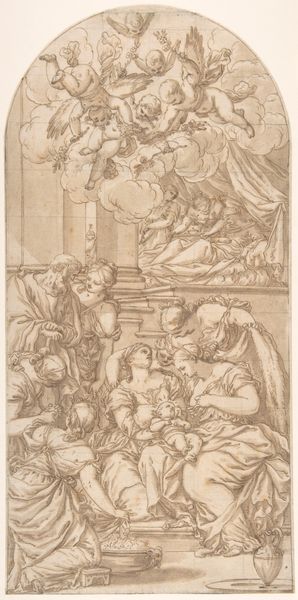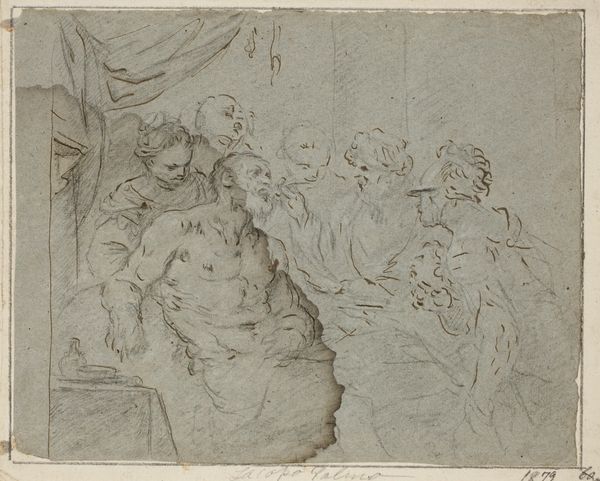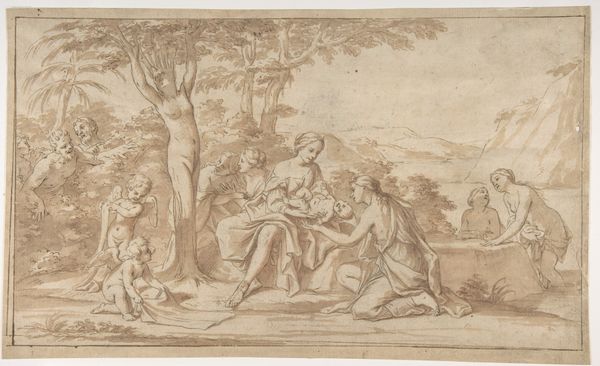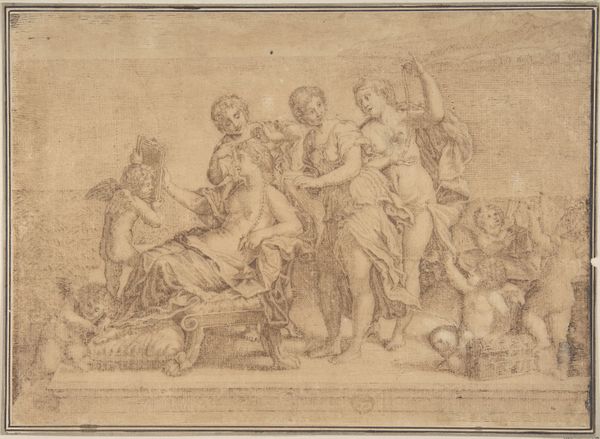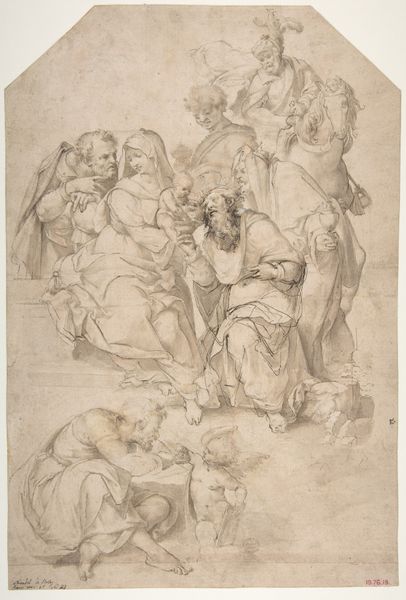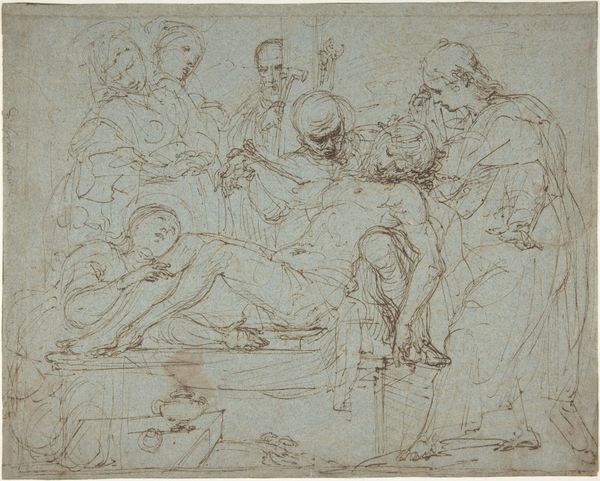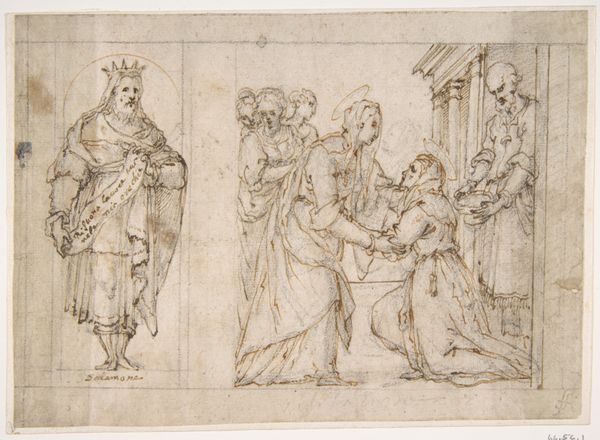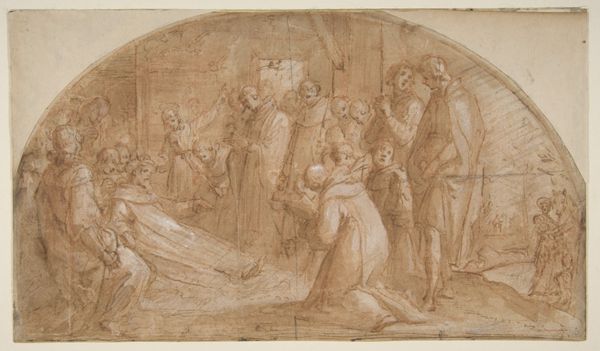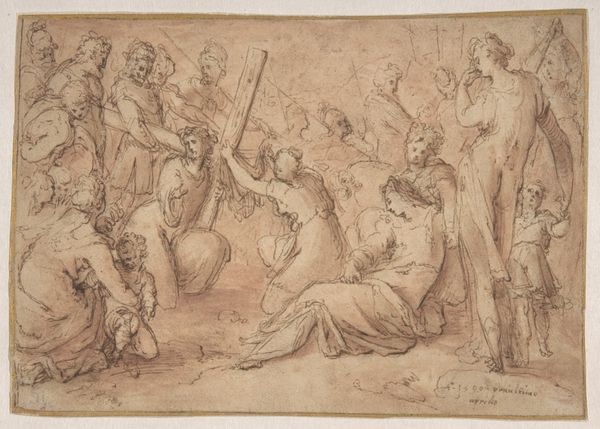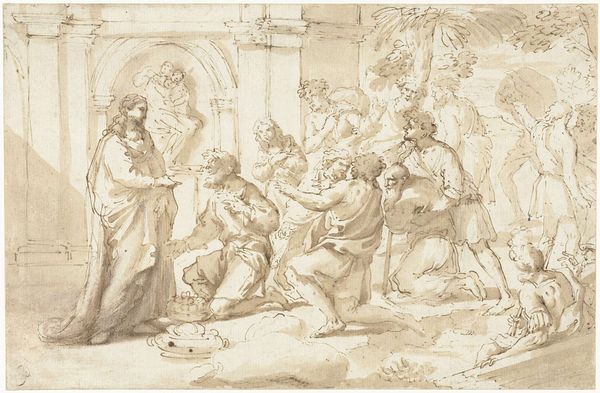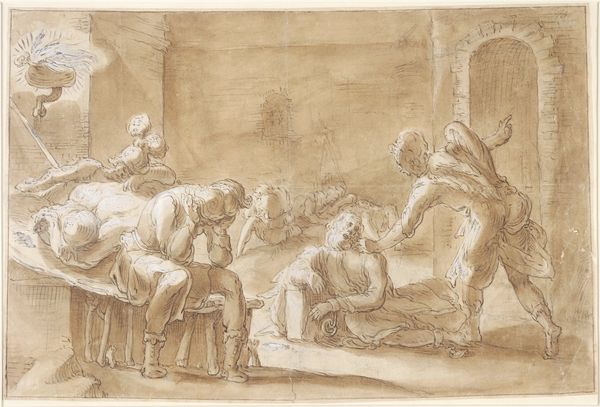
The Emperor Constantine Copronymous Burned by an Invisible Fire (recto); Studies of Sibyls and Angles (verso) 1594 - 1604
0:00
0:00
drawing, paper, ink
#
drawing
#
ink drawing
#
mannerism
#
figuration
#
paper
#
ink
#
history-painting
#
angel
Dimensions: 7-5/8 x 8-1/8 in. (19.4 x 20.6 cm)
Copyright: Public Domain
Giovanni Baglione made this pen and brown ink drawing called ‘The Emperor Constantine Copronymous Burned by an Invisible Fire’ in Italy probably in the early 17th century. The drawing depicts a scene of suffering and divine intervention. Constantine lies stricken while those around him express grief and attempt to aid him. Above, a figure in the clouds suggests divine judgment or salvation. But who was this emperor Baglione chose to depict? Constantine V, nicknamed Copronymous, ruled the Byzantine Empire in the 8th century. His reign was marked by iconoclasm, the destruction of religious images, a policy that made him a controversial figure in religious history. By depicting him burned by an invisible fire, Baglione participates in a broader cultural debate about the role of images and the nature of heresy. To understand Baglione's drawing fully, we need to delve into religious history and visual culture. Researching primary sources from the period, and engaging with the wider artistic output of Baglione will help us understand the social and institutional context of this intriguing work.
Comments
No comments
Be the first to comment and join the conversation on the ultimate creative platform.

